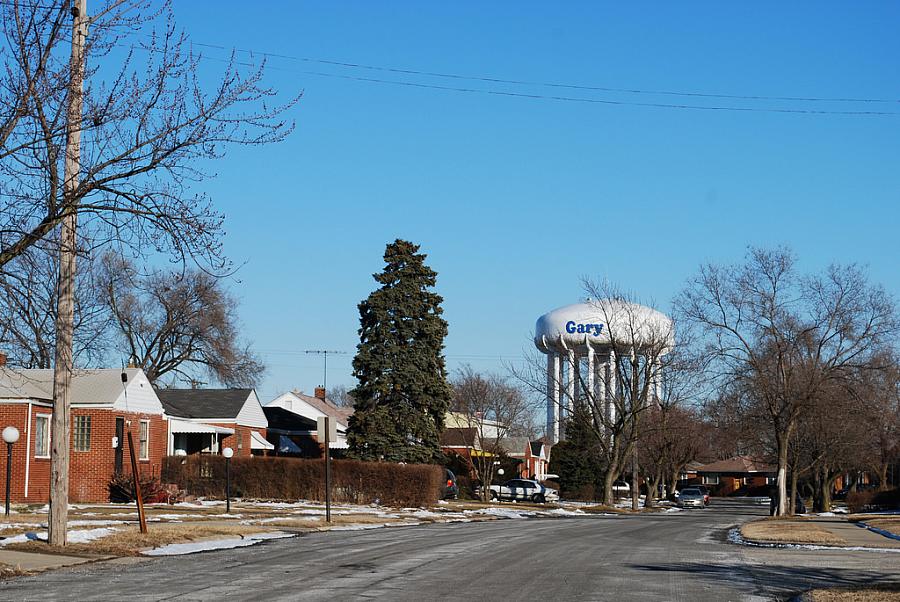What's killing Hoosier babies at such alarming rates?

Gary, Indiana is in a county with one of the highest infant mortality rates in the state — 8.5 deaths per 1,000 live births.
Infant mortality may be one of the most cold, impersonal terms out there, especially when what we're talking about is dying babies.
If the term itself is hard to comprehend, the causes are even more so. They span premature delivery and birth defects to suffocation during sleep and abuse. Sometimes there is no reason; that has its own clinical description: sudden unidentified infant death.
This is not an easy issue for people to wrap their heads around, which is why it often goes ignored. But one thing it does have going for it, unlike many other matters of public health, is the complete lack of political opposition.
Indiana Gov. Mike Pence hasn't always supported initiatives, like the HPV vaccine and needle exchanges, that have wide support in the public health community. But the Republican has made reducing infant mortality his health department's top priority. And his fiscally conservative state legislature has put millions of dollars behind it.
The money has gone toward marketing efforts, a hotline for moms and pregnant women, and an annual infant mortality conference. The state also has integrated disparate data sources, breaking down infant-mortality rates to the ZIP-code level.
Indiana ranked 44th in infant mortality in 2013, the most recent year for which the Centers for Disease Control and Prevention has data available, above only Ohio, West Virginia, Arkansas, Alabama, Louisiana and Mississippi.
More than seven out of every 1,000 children born in the Hoosier State don't make it to their first birthdays. That's more than 600 infant deaths a year. An estimated three-fourths are preventable.
But this is not strictly a black-or-white issue, in the literal sense.
The region I cover, in Northwest Indiana, includes poverty-stricken, largely African-American communities like Gary and East Chicago. The county has one of the highest infant mortality rates in the state — 8.5 deaths per 1,000 live births, putting it, if it were a nation, between Bulgaria and Costa Rica.
But the Indiana county with the highest rate of infant deaths from 2009 to 2013 — Adams, in a rural part of the state along the Ohio border — is 97 percent white.
The risk factors differ by race. While black women tend to smoke during pregnancy less than white mothers, they have higher obesity rates and are less apt to breastfeed. Black infants also are less likely to sleep alone on their backs.
And while African-American moms deliver more children with low birth weights than white mothers, when they do they have better outcomes. One explanation is that black women often live in cities close to specialty hospitals compared to white women in rural areas.
Premature birth is the leading cause of infant mortality in the U.S. The reasons for a preterm delivery also are complex. However, it often comes down to the health of the mother before and during pregnancy: diabetes, high blood pressure, and substance abuse can all play a role. Maternal age (either young or old) is also a predictor of premature birth.
Prenatal visits are an easy way to combat infant mortality. If obstetricians catch a treatable condition like an infection or hypertension, they can prevent complications down the road.
The risk factors in Indiana bear this out. The top three are going to fewer than 10 prenatal appointments, being between 15 and 20 years old, and enrollment in Medicaid.
Infant mortality is also complicated because oftentimes there is no definitive cause (though unsafe sleep plays a major role in sudden infant death syndrome). But with the state's data-collection efforts, there has never been more known about the issue in Indiana, such as the race, ethnicity, ZIP code, insurance status and health behaviors of the mothers involved. From that data, I learned that the black infant mortality death rate in East Chicago — 27.8 per 100,000 — is higher than Zimbabwe.
This issue mirrors the wellbeing of Hoosiers overall. A recent United Heath Foundation study ranked Indiana as the ninth least healthy state, in large part because of things like smoking, obesity and childhood obesity. All are risk factors for infant mortality.
“Infant mortality is a lens to the health of the state,” Dr. Jennifer Walthall, deputy state health commissioner, said in a recent interview. “If we can get this right, we can get everything else right. This is one of the most challenging public health issues to take on.”
Have Indiana's efforts made any difference so far? And what's it going to take to get Indiana to its goal of reducing the number of infant deaths by 100 a year by 2020? Through the 2016 National Health Journalism Fellowship, I plan to find out.
[Photo by Lotzman Katzman via Flickr.]
